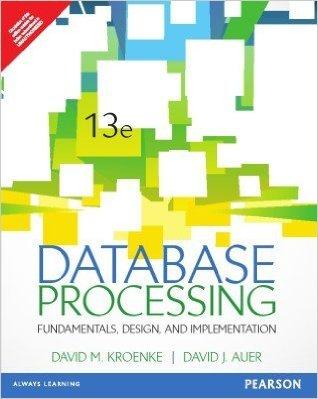Question
In python 3, using lists please post screenshots class BoundedQueue: # Constructor, which creates a new empty queue: def __init__(self, capacity): assert isinstance(capacity, int), ('Error:
 In python 3, using lists
In python 3, using lists
please post screenshots
class BoundedQueue: # Constructor, which creates a new empty queue: def __init__(self, capacity): assert isinstance(capacity, int), ('Error: Type error: %s' % (type(capacity))) assert capacity >= 0, ('Error: Illegal capacity: %d' % (capacity)) self.__items = [] self.__capacity = capacity def enqueue(self, item): if len(self.__items) >= self.__capacity: raise Exception('Error: Queue is full') self.__items.append(item) # Removes and returns the front-most item in the queue. # Returns nothing if the queue is empty. def dequeue(self): if len(self.__items)
# Returns a string representation of the object # bounded queue: def __repr__(self): return str(self) + " Max=" + str(self.__capacity)
class CircularQueue: # Constructor, which creates a new empty queue: def __init__(self, capacity): if type(capacity) != int or capacity
Q1) Implement the Bounded Queue and Circular Queue ADT as seen in class The python implementations of these data structures are given in the lecture slides. Make sure you raise exceptions when peek(/dequeue() if the queue is empty enqueue() if the queue is full After completing the implantations, compare the runtime of dequeue() methods in Bounded Queue and Circular Queue. In bounded queue, once you dequeue an item, the remaining items in the list will be shifted left. Therefore, the dequeue in Bounded Queue is O(n). However, in circular queue, you just change the start pointer (index) when dequeue. Therefore, the dequeue in a Circular Queue is O(1). Thus, in theory, dequeue in Circular Queue should be much faster than the dequeue in a Bounded Queue. Write your code to test whether this hypothesis is true or false Here are the steps for this experiment: 1. Create a Circular Queue object and enqueue 100000 items in it. 2. Create a Bounded Queue object and enqueue 100000 items in it 3. Compute the time required to dequeue all items from the Circular Queue 4. Compute the time required to dequeue all items from the Bounded Queue Here is how to use the time module import time start- time.time) # The statement (s) that you want to test end-time.time) time interval-end - start 5. Finally, print the dequeue) runtime for each queue as shown in the sample output. Please note: We need to enqueue many items in the Circular and Bounded Queues in order to get a reasonable run time for both queues. Moreover, keep in mind that time can be different from computer to another and the time module gives you time in second. Here is a sample output For Bounded Queue, the total runtime of dequeing 10000e is: 1.8420054912567139 Seconds For Circular Queue, the total runtime of dequeing 10000e is: 0.04388284683227539 Seconds
Step by Step Solution
There are 3 Steps involved in it
Step: 1

Get Instant Access to Expert-Tailored Solutions
See step-by-step solutions with expert insights and AI powered tools for academic success
Step: 2

Step: 3

Ace Your Homework with AI
Get the answers you need in no time with our AI-driven, step-by-step assistance
Get Started


